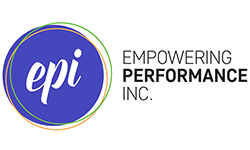Doing Deep Work
Deep conversations can lead to deep work. On a recent trip with extended family, we talked about cell phone and social media use, and how technology distractions are impacting human connection. I was reading Cal Newport’s Digital Minimalism at the time, so I shared some of his findings and anecdotes. That book and our vigorous family discussion prompted me to read Newport’s Deep Work (2016), especially after a teammate highly praised it. I’m glad I did.
Cal Newport is a Georgetown University computer science professor “who writes about the intersection of technology and society.” That’s a very busy intersection these days! But how do we get through it without getting run over?
No one would argue that we should bypass the technology route completely. However, the bombardment of the Digital Age forces our brains to be constantly “on” and hijacks our capacity for what Newport calls deep work.
The biggest hijacker is dopamine. It’s why we’re addicted to email, social media, texting, and being online. Dopamine causes what scientists call “wanting and seeking behavior.” Unfortunately, our dopamine system doesn’t have an off button. The more we want and seek—and the more we’re rewarded with fast answers and notification pings—the more we search. It’s a vicious dopamine loop that continually shifts our attention.
Newport points out that to excel in the 21stcentury workforce—in any field—we must be able to “quickly master hard things” and “produce at an elite level.” However, to develop these attributes we need to be able to focus intently, without distractions.
How can we circumvent the dopamine loop and do the deep work necessary to solve difficult problems or accomplish important tasks?
Cal Newport lays out four approaches to deep work. You may find it helpful to use some combination of them.
Monastic Approach – Eliminate “shallow obligations” and minimize distractions through long periods of isolation and disconnection. This might even be weeks or months in order to accomplish a difficult goal. Think Olympic athlete who leaves home to train. Chances are it’s not practical for most of our daily lives, but what about a yearly retreat?
Bimodal Approach –Divide your schedule between deep and shallow (or “open”) time, with long stretches of exclusion during the deep time. Newport gives the example of dividing a week into four days of deep time and three days of open time. Since the minimum time for maximum productivity under this approach is one full day, it may or may not be completely practical. But one day a month? That could be doable.
Rhythmic Approach – Carve out “rock-solid routines” that ensure you get concentrated blocks of time for deep work. And avoid distractions by unplugging from technology. You may still need to use a computer, but that doesn’t mean you can’t close your email and IMs, and silence notifications. One of our team members is finding this approach very conducive to writing.
Taking the Rhythmic Approach to deep work means forging an unbreakable habit chain over time.
For example, every morning until noon you commit to doing deep work. And your coworkers know it. It’s not completely “monastic,” but it’s definitely “monk mode.”
Journalistic Approach – Take pockets of time to do concentrated, distraction-free work whenever you’re able. Not ideal, but it might be all you have. Another of our teammates, who wants to be available to other team members trying to meet client deadlines, finds this approach more to her liking.
These methods aren’t without their challenges, especially for a virtual team who can’t walk up to a door and knock when there’s a crisis. You should be aware and respectful of how your deep-work schedule affects others. But the point is that deep work doesn’t have to be a one-size-fits-all approach. It can vary with the individual, with the project, with the time of year, etc.
Keep in mind that deep work doesn’t mean you’re always going it alone: focused collaboration is often ideal.
Carving out time for deep work requires an environment built on trust. Fortunately, we have that at EPI. We haven’t worked out all the kinks yet, but we’re trying. Because a lot of what we do here requires the deepest kind of work.
Here are a few other tips for making the most of deep work:
Have set times. Start at a specific time every day. And know when you’ve ended your day; send your team some kind of “Done for the day” message. Then focus on your downtime and give your loved ones the gift of mindfulness.
Schedule your distractions. You want to watch funny cat videos, that’s fine. But set a time limit and abide by it. Don’t get sucked into the black hole.
When you’re doing deep work, take deep breaks. It’s difficult to maintain concentration for longer than 50 minutes. But your breaks shouldn’t distract from the work at hand.
Build a deep-work ritual. It may be someplace special you work. How you work. How long you work. What surrounds you.
Quit social media for 30 days; replace it with something meaningful to you, preferably involving humans. (Pressing the “like” button is not a profound social interaction, although our dopamine-driven brains may try to make us believe that.)
The main thread through all of Cal Newport’s deep-work philosophy is that we must be intentional. In the time we spend on work. In the time we spend away from work. And in the technological tools we choose to use . . . or not use. Think about it. Have a conversation with your team about it. Then figure out together how you can use deep work to take your efforts to the next level.
Michelle Kelly, CEO (Chief Enjoyment Officer)


